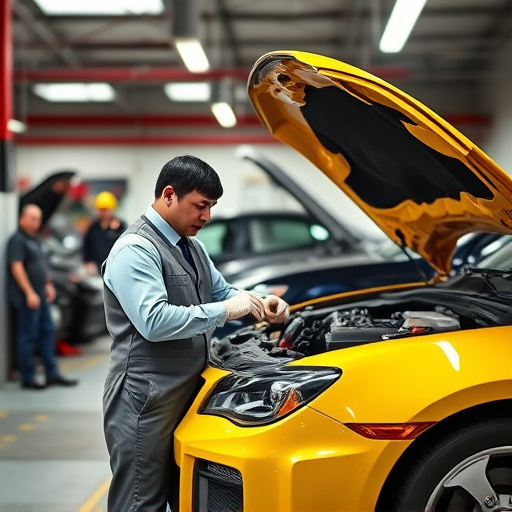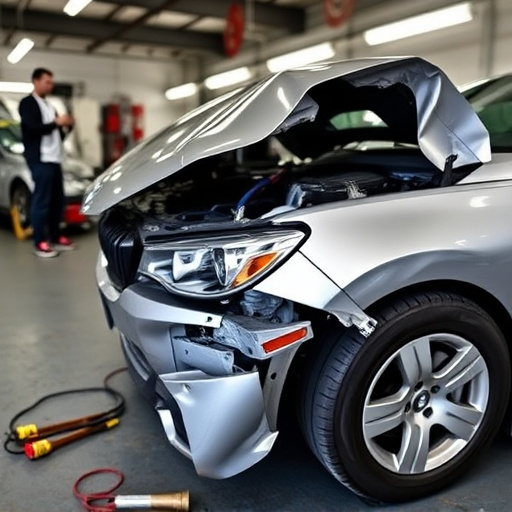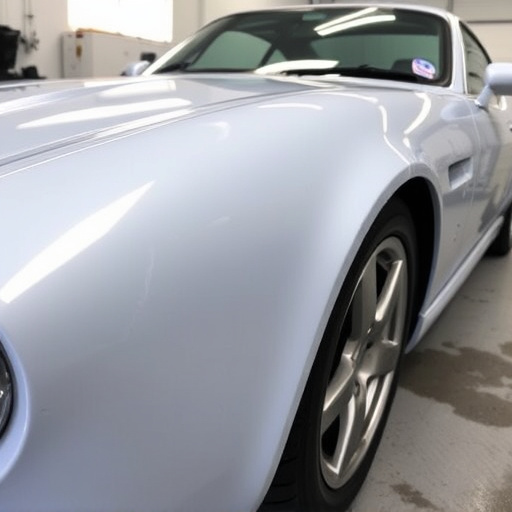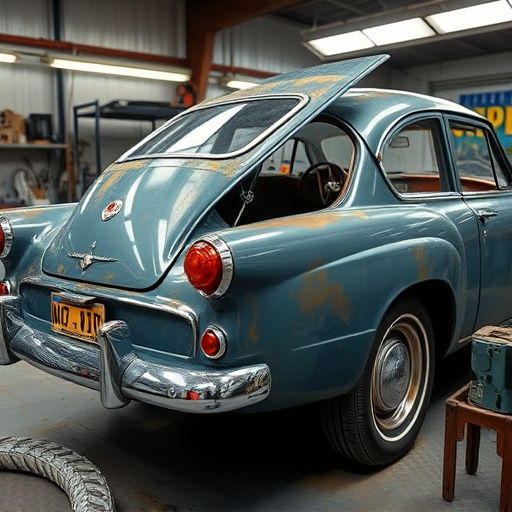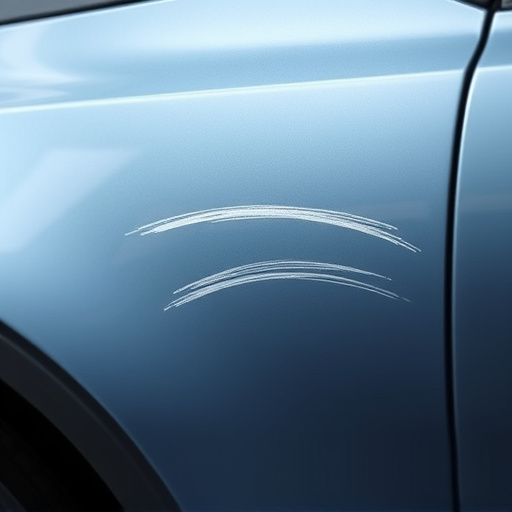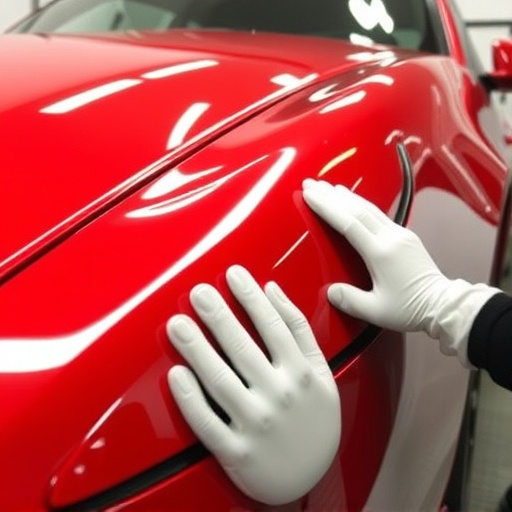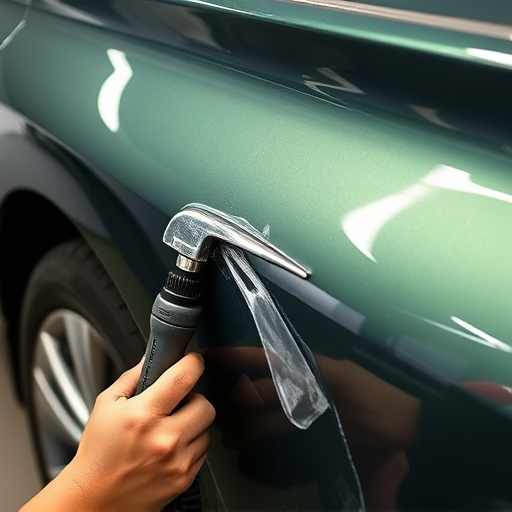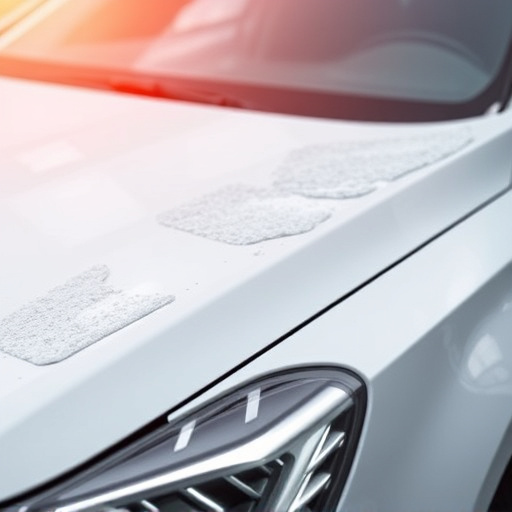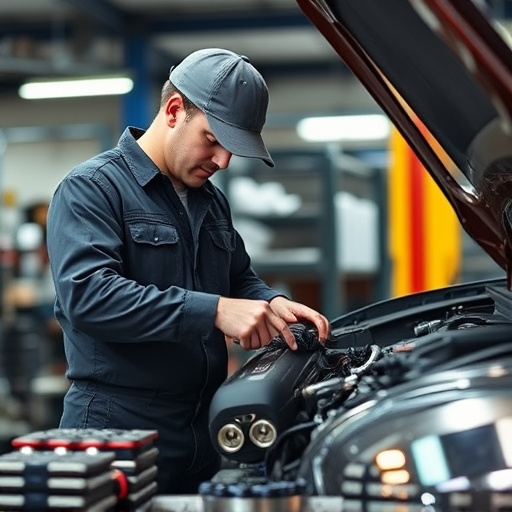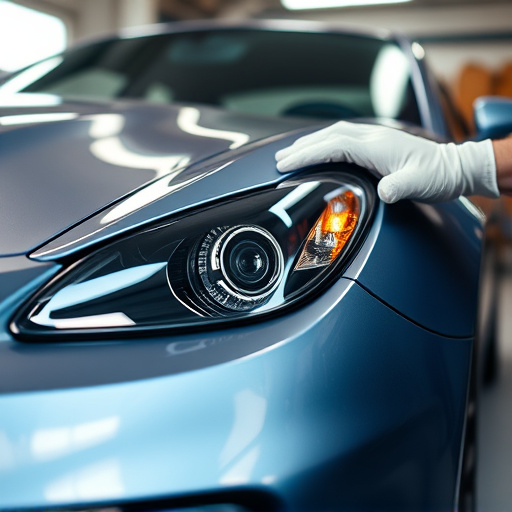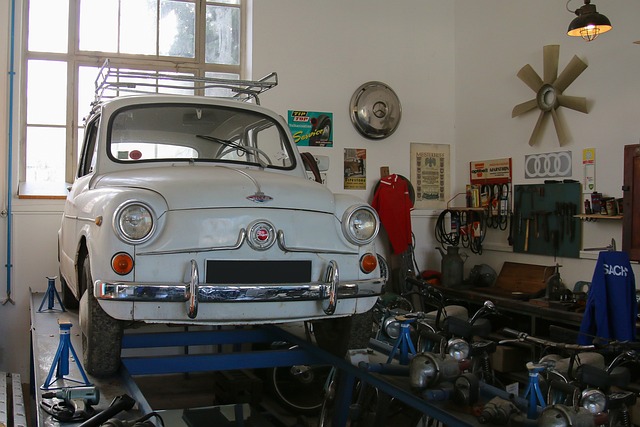High-strength steel panels have revolutionized automotive manufacturing and construction due to their superior strength and durability. Welding these advanced materials, however, presents unique challenges requiring specialized equipment and processes. Auto body shops need skilled technicians for optimal weld quality. Two prominent welding techniques are laser welding, known for precision and speed but needing specialized gear, and TIG welding, versatile for various steel types with excellent corrosion resistance, though slower and demanding an argon shield to prevent oxygen contamination. Meticulous preparation, the right welding method (like GMAW for HSLA steels), stable current, and high-quality filler materials ensure robust welds, reducing repair costs and enhancing vehicle restoration outcomes in demanding industries.
In today’s industrial landscape, working with high-strength steel panels has become essential. These robust materials demand specialized welding techniques to ensure structural integrity and performance. This article explores the best welding techniques tailored for high-strength steel panels, delving into their unique properties and the advantages and disadvantages of popular methods. We’ll provide practical tips and best practices to help welders achieve strong, durable bonds, meeting the demanding requirements of these advanced materials.
- Understanding High-Strength Steel Panels and Their Unique Welding Requirements
- Popular Welding Techniques for High-Strength Steel: Advantages and Disadvantages
- Best Practices and Tips for Achieving Strong and Durable Welds on High-Strength Steel Panels
Understanding High-Strength Steel Panels and Their Unique Welding Requirements

High-strength steel panels have revolutionized various industries, including automotive manufacturing and construction, thanks to their exceptional strength-to-weight ratio and durability. These advanced materials are designed to withstand extreme forces, making them a preferred choice for critical applications. However, welding high-strength steel panels presents unique challenges due to their inherent properties. Their superior strength translates to higher hardness, which can make it difficult for traditional welding techniques to create strong, consistent bonds.
When considering the best welding techniques for these panels, understanding the material’s characteristics is paramount. Unlike conventional mild steel, high-strength steel may require specialized equipment and processes to ensure optimal weld quality. Auto repair services and car body shops often encounter these panels when dealing with modern vehicles or structural repairs, emphasizing the need for skilled technicians familiar with the specific welding requirements of high-strength steel.
Popular Welding Techniques for High-Strength Steel: Advantages and Disadvantages

In the realm of high-strength steel panels, several welding techniques have gained popularity due to their ability to enhance structural integrity and precision in auto bodywork and vehicle paint repair. Among these, Laser Welding stands out for its unparalleled accuracy and speed, making it ideal for intricate designs and tight spaces. This technique offers advantages such as minimal heat input, reduced distortion, and consistent quality, but it requires specialized equipment and skilled labor.
Another prominent method is TIG (Tungsten Inert Gas) Welding, which is highly versatile and suitable for various steel types, including high-strength variants. TIG welding excels in producing clean, strong joints with excellent resistance to corrosion, making it a favorite among professionals for car bodywork applications. However, its disadvantages include slower welding speed compared to laser methods and the need for an argon shield to prevent oxygen contamination, which can affect the final finish, particularly when working on vehicle paint repair projects.
Best Practices and Tips for Achieving Strong and Durable Welds on High-Strength Steel Panels

Achieving strong and durable welds on high-strength steel panels requires meticulous attention to detail and adherence to best practices. Pre-cleaning the panel surfaces is non-negotiable; removing any oil, grease, or debris ensures a clean weld environment. Using the appropriate welding technique for your specific high-strength steel type is paramount. For instance, High Strength Low Alloy (HSLA) steels often benefit from Gas Metal Arc Welding (GMAW) due to its precision and ability to produce clean, consistent joints.
Further tips include maintaining a stable welding current to prevent heat input variations, which can lead to cracking or distortion. Filling the weld with a high-quality, matching filler material ensures structural integrity, especially in thick panels. In an auto body shop or tire service environment where precision and strength are paramount, these practices translate directly into reduced repair costs and improved vehicle restoration outcomes. For example, using GMAW for HSLA steels can streamline the process, offering both efficiency and reliability in a demanding industry like auto body repair.
When welding high-strength steel panels, understanding the material’s unique properties and selecting the appropriate technique are key. This article has explored popular welding methods, highlighting their advantages and disadvantages in the context of these advanced materials. By adhering to best practices and tips outlined here, such as preheating, proper joint design, and using suitable filler metals, you can achieve strong, durable welds that meet the demanding requirements of high-strength steel panels. These techniques ensure structural integrity and long-lasting performance in various applications.
